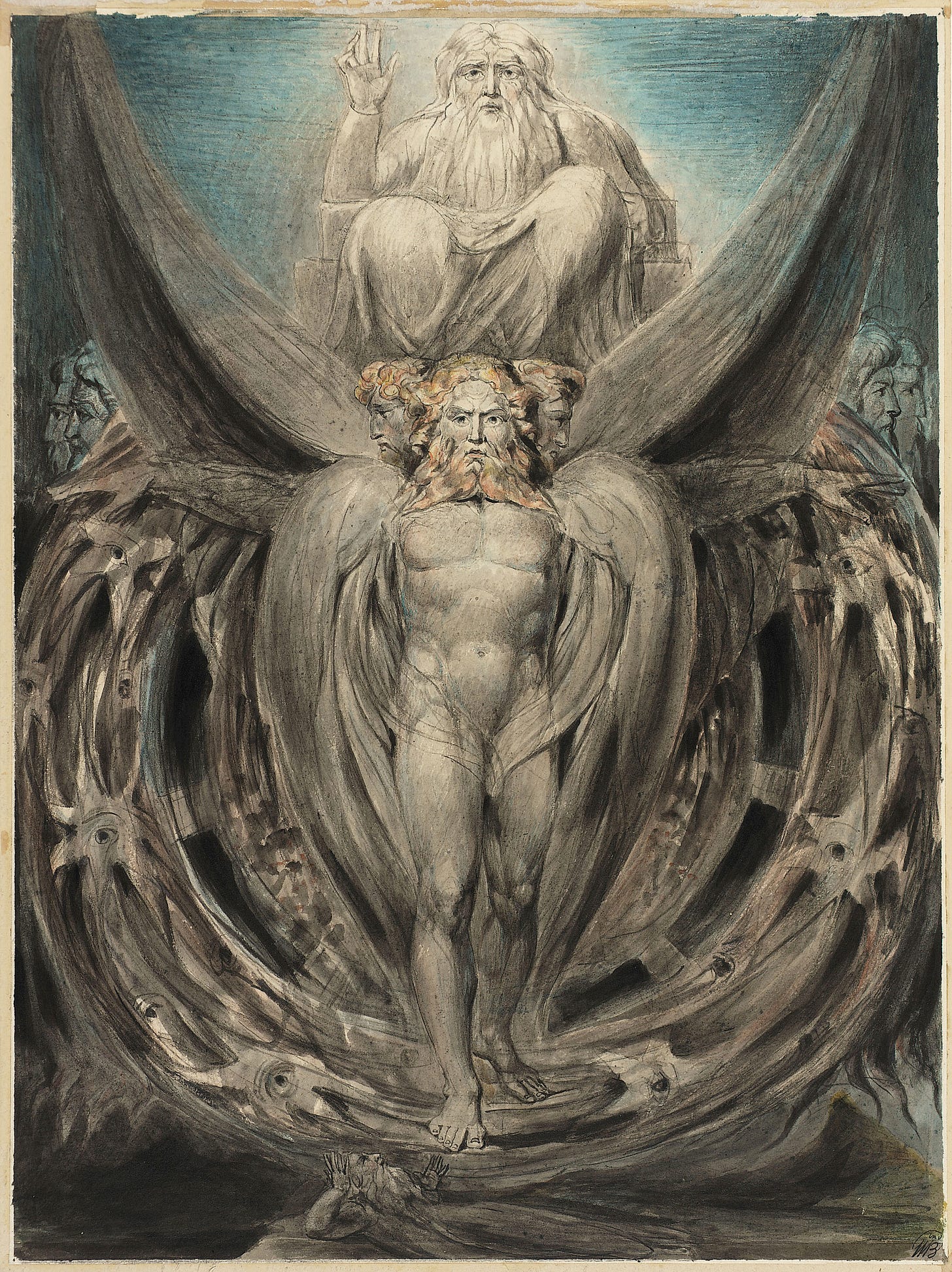Ezekiel 1 opens with the prophet “among the exiles on the river Kevar,” and it is there that “the heavens were opened and I saw divine visions” or “visions of God” (Ezek 1:1). (Or “gods”? אלהים can, after all, mean either, though in the Hebrew Bible it is more often an absolutized “Deity” or “God” rather than “gods.”)1 These visions happen in a context of trauma: Ezekiel is among the exiles, and clarifies that this is the fifth year of the of the exile of king Jehoiachin (1:3), so around 592, some six years before the destruction of the Jerusalem Temple in the Babylonian Exile of 586.2 Then, an “editorial intervention,” clarifying that what follows is “the word of the LORD” and “the hand of the LORD.” What is his experience? “a storm wind…coming from the north, a great cloud, and fire flashing, and radiance all round it, and from within it like the appearance of amber from within the fire” (1:4-5). The amber—חשמל in Hebrew, ἐλεκτρόν in Greek, whence Latin electrum, and, yes, our own word electricity—will become important below. Within this theophanic storm cloud, Ezekiel beholds “the likeness”—only ever the “likeness,” the דמות, of the things seen, never the direct reality, is affirmed in the text of Ezekiel—“of four living creatures, and this was their look—the likeness of a human being they had” (1:5). The four living creatures each “had four faces and four wings to each of them,” “straight legs,” “soles of their feet like the soles of a calf’s foot, and they glittered like the look of burnished bronze” (1:6-8). They have “human hands beneath their wings on their four sides. And the faces and the wings of the four of them were joined to each other. Their wings did not turn as they went; each went straight ahead” (1:8-10). If that sounds confusing and undetectable, it is possibly supposed to, by authorial intention, or, as Alter avers, by “the product of scribal inadvertence.”3 The creatures travel in tandem with “the spirit” or “wind” (1:12); they have an appearance “like burning coals of fire, like the look of torches going back and forth among the creatures, and the fire had a radiance, and from the fire lightning came forth” (1:13-14). Paired to each creature is “one wheel” that “was on the ground by the creature on its four sides. The look of the wheels and their fashioning were like chrysolite, and a single likeness the faces of them had, and their look and their fashioning as when a wheel is within a wheel. On their four sides as they went they would go. They did not turn as they went” (1:15-17). The wheels are “full of eyes” (1:18). These wheels travel wherever the creatures do because “the spirit of the creature was in the wheels. When they went, they would go. When they stood still, they would stand still, and when they lifted up above the ground, the wheels would lift up along with them, for the spirit of the creature was in the wheels” (1:19-21). The creatures hold up with their wings a “platform” or “dome” (רקיע, the same word that appears in Genesis 1 as a word for the firmamentum of heaven); that platform is made of sapphire (1:26), which is likely a cue that it is meant to be a stand-in for heaven, and above the platform is “the likeness of a throne, and above the likeness of the throne, like a human form upon it above” (1:26). And then:
I saw like the appearance of amber, like the look of fire within it all round—from the look of his loins above and from the look of his loins below I saw like the look of fire with radiance all round. Like the look of the rainbow that is in the clouds on a day of rain, this was the look of the radiance all round, the look of the likeness of the glory of the LORD. And I saw and fell on my face and heard a voice speaking…(1:27-28).
Keep reading with a 7-day free trial
Subscribe to A Perennial Digression to keep reading this post and get 7 days of free access to the full post archives.




